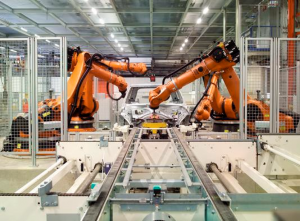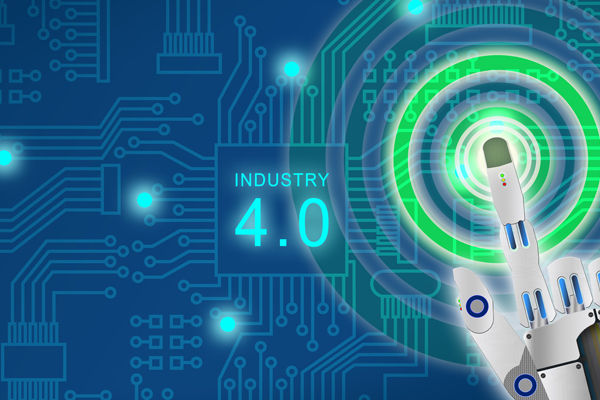The 4th Industrial Revolution is a highly discussed topic and it gained even more attention when it became the focus of discussions at the World Economic Forum’s Annual Meeting in 2016. Industry 4.0 has brought and continues to bring fundamental changes to manufacturing, which some welcome, some fear.
Those who welcome it see the potential in the technical advancements which Industry 4.0 holds. The factories which have been improved with the latest technology are called smart factories. The components of these factories are connected and together they create a web of information and production, the so-called Industrial Internet of Things. A perfect example is the Siemens (IW 1000/34) Electronic Works facility in Amberg, Germany. The 108,000-square-foot high-tech facility is adequate for a built-to-order process involving more than 1.6 billion components.
An advanced factory like this improves manufacturing processes in numerous ways compared to traditional factories. In a summary from RobotWorx, decreased production costs by shorter cycle times (among others) and improved quality and reliability are named first. They also emphasize the advantage of better floor space utilization which is possible by decreasing a footprint of a work area. By reducing the factor of human mistakes one can calculate with reduced waste as well. It is also important to highlight the increase of safety since human workers are moved to supervisory roles where they no longer have to perform dangerous applications in hazardous settings. And last but not lease adaptability is also a key factor for success and robots and AI are suitable for performing a variety of applications.
It is also very important to emphasize that having a smart factory has became affordable: there are agile factory robots for as little as $25,000 already, which is financially equivalent to paying a full-time human worker $4 an hour over the life of the machine.
As a proof of the previously mentioned advantages, the Siemens Work facility only records about 15 defects per million and has shown a 99% reliability rate and 100% traceability on its expansive lines. The numbers speak for themselves.


Industrial Robots
Having new opportunities at hand, thanks to the 4th Industrial Revolution, companies seem to re-shape their strategies. Hybrid business models are becoming more and more popular. This new constellation allows participating product providers and service providers to share core competencies to develop products and services together or companies with the means to expend their market reach.
“Smart products” do not only have physical characteristics, but are also provided with sensors which allow traditional manufacturers to integrate their products with high-quality services, to enhanced customer and supply partner experience. A prefect example is Michelin, which introduced it’s new sensor-equipped tires. With the data received on fuel consumption, tire pressure, temperature, speed and location and the necessary analytics, they are now able to coach truck fleet drivers on how to save fuel.
Another hybrid model success story is Daimler, with its Car2Go service. With equipping their Smart cars with the necessary information technology, they have taken their business beyond simply building cars to renting them. Both these companies entered a new market by improving their original products by utilizing what technology made possible.
Since for some businesses, as proven previously, automation is unquestionably an improvement with financial benefits, the demand for industrial robots is getting bigger. According to the International Federation of Robotics, while in 2000 there were 750.000 robots in operation, this number increased to approximately 1.8 million by 2016. They are expecting a further, more rapid growth in stock of industrial robots having 2.6 million robots in operation by 2019. The fact, that in 3 years the increase is supposed to be almost 50%, makes some experts quite concerned and recognize robotic automation as an “inevitably disruptive force”. The World Economic Forum predicted that robotic automation will result in the net loss of more than 5m jobs across 15 developed nations by 2020.
On the other hand though, according to one of the articles in the Harvard Business Review, if human workers could fully be replaced by robots than greater employment drops would be experienced in countries with higher investment rates in automation, but so far there is no proven relationship between a countries use of robots and the percentage of manufacturing job lost.
With the title “Robots Will Take Our Jobs – But We Will Adapt” the TIME published an article in which they explain how this extremely fast and dynamic change caused by robots and Artificial intelligence can be beneficial to everyone. Tyler Cowen and other experts have suggested, that “humans must develop skills that complement the functions that computers and AI systems perform well.”
We should think of Industry 4.0 as a change in life we can’t ignore. It will mean a shift in the labor market, a new way of manufacturing, it opens up a completely new era. One can take advantage of it by being proactive and having an open mind, it’s time to be pioneers.
for more info click on the link below







